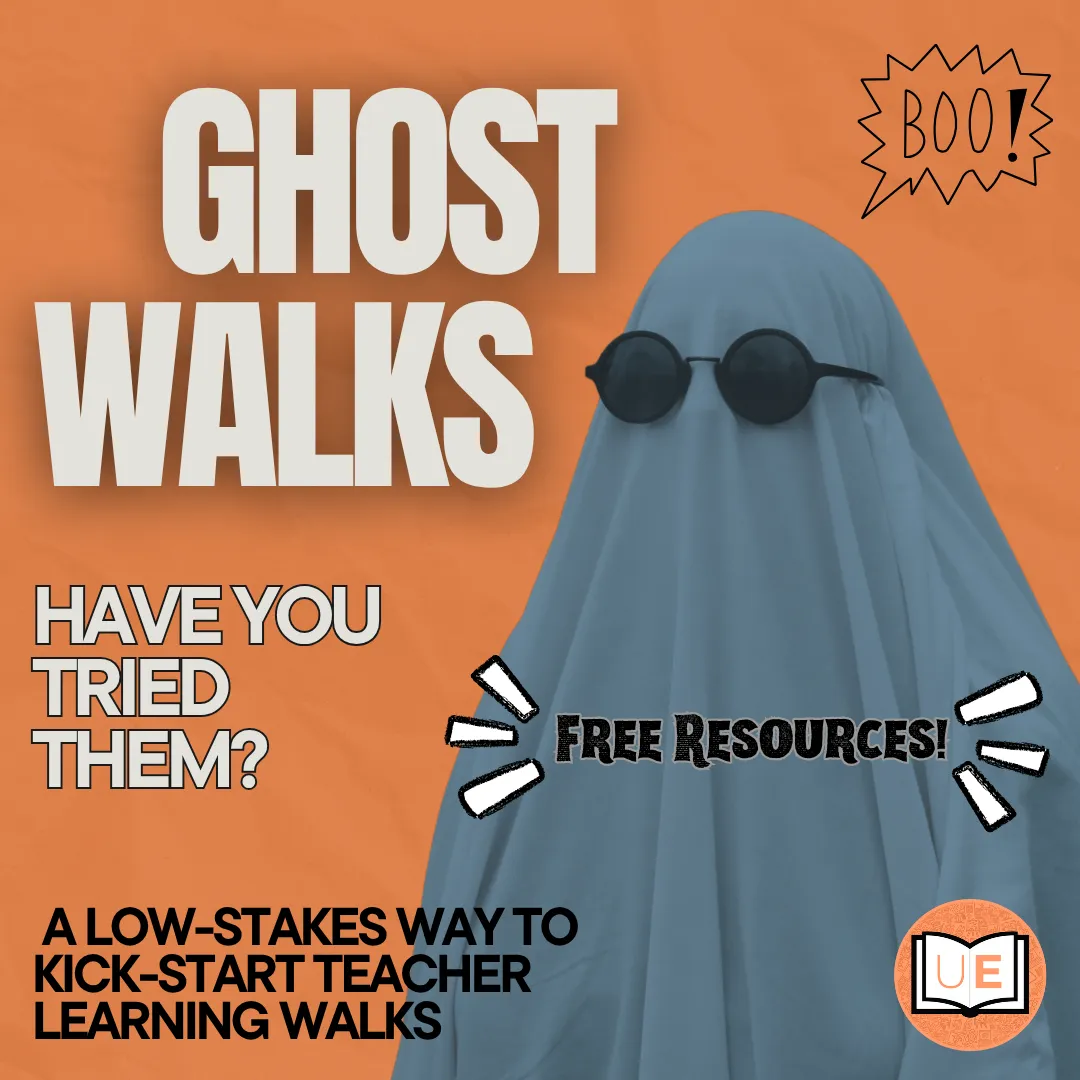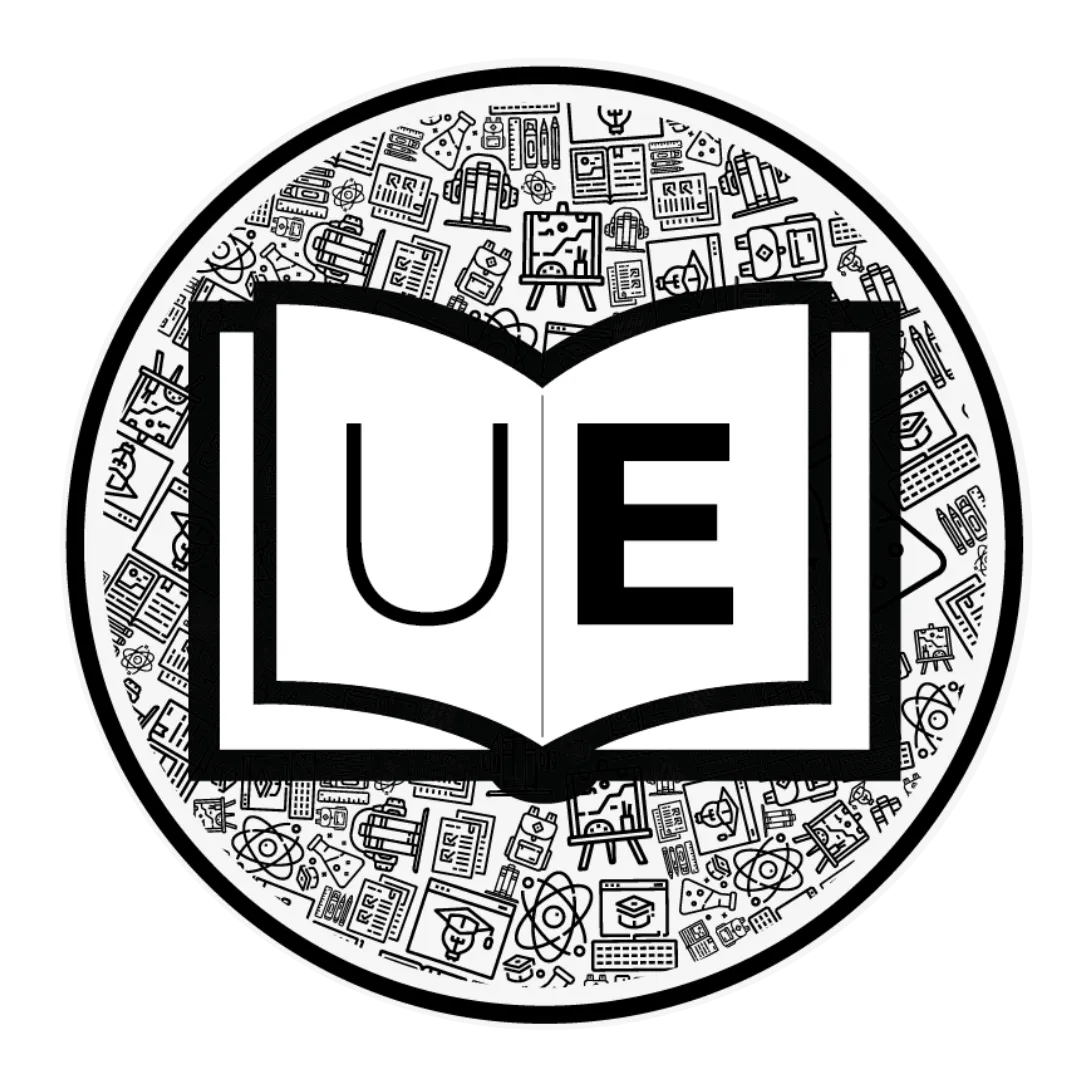
Ghost Walks: A Low-Stakes Way to Kick-Start Teacher Learning Walks | Uncomplicate Ed
See how a quiet walk, through empty classrooms, can spark collaboration, clarity, and collective growth.
Here's the Gist:
Ghost Walks are low-stakes, teacher-to-teacher observations held when students aren’t present—focused on noticing, not evaluating.
They build trust and collaboration, giving teachers a safe way to learn from each other.
Observers take evidence-based notes to spark fresh classroom ideas and reflection.
Ghost Walks serve as a gateway to Learning Walks, strengthening shared language and collective efficacy.
The best time to start is early fall or mid-year; repeat once or twice a year to keep momentum.
Get started with Uncomplicate Ed’s free Ghost Walk Toolkit, including checklists and reflection guide: CLICK HERE FOR TOOLKIT
Keep reading...
What Exactly Is a Ghost Walk?
Ever wish you could peek into your colleagues’ classrooms without the pressure of anyone watching you back?
Welcome to Ghost Walks!
A low-stakes, high-impact way to spark professional learning across your school.
Let’s be honest. Opening your door for observation can feel intimidating. Ghost Walks are a gentle, trust-building first step that helps teams get comfortable before diving into live classroom visits.

Tell me more...
A Ghost Walk (sometimes called a Ghost Visit) is a teacher-to-teacher observation that happens when students aren’t in the room.
Observers quietly walk through classrooms with clipboards or digital forms in hand—not to critique, but to notice what the environment reveals.
They look for things like:
Are learning goals visible and clear?
What scaffolds or visuals support students?
How does the space invite independence, collaboration, or curiosity?
During a Ghost Walk, teachers take descriptive notes focused on evidence, not evaluation.
Think:
✅ “Anchor charts show step-by-step strategies for problem-solving.”
❌ “Teacher doesn’t have enough visuals up.”
This reflective approach helps teachers spot ideas they can borrow or adapt without judgment or scoring.
The practice began with the Ghost Visit Protocols (Miniel & Kelly, 1999) and has since been expanded by the National School Reform Faculty, Douglas Fisher & Nancy Frey (Principal Leadership, 2014), and Faddis, Fisher & Frey (Collaborating Through Collective Efficacy Cycles, 2021). Together, their work shows that Ghost Walks are the perfect first step toward stronger, peer-driven Learning Walks.
Why Try a Ghost Walk

Sometimes the best way to see teaching is to look at everything around it.
1. Low-Threat, High-Trust
No one’s being evaluated, so anxiety stays low and curiosity stays high.
Teachers open their doors voluntarily, creating a culture of trust and shared growth.
2. Build a Common Lens
Walking rooms together helps staff calibrate what “visible learning” looks like—clear goals, success criteria, routines, and supports.
You start building shared language without the pressure of rubrics.
3. See What’s Usually Invisible
When you take away the lesson and just look at the space, you start to notice things you’d normally miss like anchor charts, organization systems, and creative cues for independence.
4. Spark Instant Ideas
Every teacher leaves thinking, “Oh, I could try that!”
Ghost Walks naturally spark fresh classroom ideas without a single PowerPoint or PD day.
5. A Gateway to Learning Walks
They’re the warm-up lap before full Learning Walks. Once teachers feel comfortable, it’s easy to transition into observing instruction and student work with confidence.
When's the Best Time to Do a Ghost Walk?
The sweet spot is late September through October. This is after routines settle but before the holiday rush.
If you’re reading this mid-year, don’t worry. It’s never too late. The key is to frame it as growth-oriented and optional at first.
Pro tip: Pair your Ghost Walk with a faculty meeting or PLC focus like Visible Learning Environments or Access for All Learners.
That way, what you notice connects directly to your school’s professional goals.
Many schools repeat Ghost Walks once or twice a year, especially at the start of new PLC cycles or when welcoming new staff. It keeps the ideas flowing and the momentum going.

How to Launch Ghost Walks at Your School
Step 1: Build Buy-In
Introduce the idea during a staff meeting or PLC. Explain that it’s not about evaluation—it’s about seeing how our environments support learning.
Try saying: “This isn’t about perfection; it’s about inspiration.”
Step 2: Choose a Focus
Pick one or two lenses for everyone to observe, such as:
Learning intentions and success criteria
Student accessibility and organization
Equity and inclusivity
Independence or collaboration
Step 3: Recruit Volunteers
Ask for a few teachers to open their doors first. Rotate participation each time.
Step 4: Schedule the Walk
Plan for 10–15 minutes per classroom during planning or coverage blocks. Teams of two or three work best.
Step 5: Walk Silently and Curiously
Move quietly through each room, jotting down evidence, not evaluation.
“What I saw…” instead of “What they should…”
Step 6: Debrief and Reflect
Afterward, meet briefly to discuss:
What patterns did we notice?
What inspired us?
What questions do we have?
Focus on themes across classrooms, not individuals.
Step 7: Share and Celebrate
Invite host teachers to hear what peers noticed.
Highlight “bright spots” in newsletters, PLCs, or staff shout-outs to share great ideas.
Step 8: Repeat and Grow
After a few rounds, expand your focus or move into full Learning Walks that include live instruction.
Each cycle builds confidence, trust, and collective efficacy.

What it Might Look Like in Action
When schools introduce Ghost Walks, they often see quick, meaningful shifts in their schools' culture. Teachers view their spaces with fresh eyes, hallway conversations deepen, and small changes ripple into big impact.
No formal training. No stress. Just curiosity, clarity, and collective action taking root, just one walk at a time!
Ready to get Started?
We've made it easy to bring Ghost Walks to life on your campus!
Administrators: Download the Free Ghost Walks Toolkit to plan, schedule, and launch your first walk with confidence.
Teachers: Grab the Free Ghost Walks Toolkit to help guide your observations and reflections during each walk or as a way to share the idea with your administration.
Together, these tools will help your team see teaching through a new lens—turning quiet observations into collective insight and growth!

TL;DR (In Case You Skimmed)
Ghost Walks = peer observations without students, focused on noticing, not judging.
A low-stakes way to build trust and open classroom doors.
Teachers take evidence-only notes on the learning environment.
Helps teams see patterns, share ideas, and grow together.
Best time: early fall or mid-year; repeat to keep momentum.
Download the free Ghost Walk Toolkit to launch your own.

